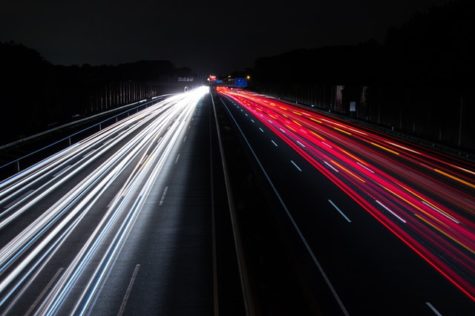LINCOLN, England — When you exit the freeway and start down a quiet residential road, does it seem like the speed limit is unbearably slow? The sudden drop-off from 70 mph to 30 mph in just a few seconds may seem fairly daunting for drivers. Now a recent study sheds light on why judging a significant swing in speeds can be such a challenge for our brains.
The research comes from a group of vision scientists at the University of Lincoln. In the driving example, the authors explain that it’s more difficult to correctly judge your own velocity after traveling at a fast speed for an extended period of time. Sports referees watching footage in slow motion after focusing so strongly on a fast-paced event can have the same problem.

For the study, the researchers recruited a group of 17 people comprised of students and staff from the university to take part in seven experiments. Each experiment used five participants and none of the individuals took part in more than four of the experiments. All participants had either normal or corrected-to-normal vision.
The experiments all involved participants watching people or objects moving at various speeds. In one of the trials, the subjects observed slow-motion footage of people running a marathon or walking. After watching the clips, participants viewed the footage at regular speed, but told researches the playback appeared as sped up. The footage had to be slowed back down to appear “normal” to them. The researchers also showed footage of fast movements to participants, and the opposite effect occurred: the participants saw the playback as too slow.
Vision scientists call this phenomenon the “adaptation effect.” People generally view the altered footage as natural behavior after only a short time. Scientists think that the time people spend adjusting to different speeds is due to the brain continuously compensating for shifts in visual stimulation.
George Mather, lead author of the study and a professor of vision science at the university explains the phenomenon. “The speed at which people move – their gestures or walking pace – carries important social cues about the meaning and intent behind their actions or their emotional state and temperament,” he says in a media release. “Eyebrows, for instance, can say a great deal. A rapid flick is a common form of greeting, while a slow rise and fall can indicate surprise or fear, and the speed at which a person walks is slower when that person is feeling sad rather than happy.”
Mather says sports referees should consider the adaptation effect when leaving the field to view instant replays, warning that the phenomenon could surely impact their judgments. In the highway example mentioned above, he says that drivers may experience a similar effect known as “velocity re-normalization,” meaning extra time is necessary for the brain to adjust to the change in speeds.
The full study was published in Scientific Reports.
